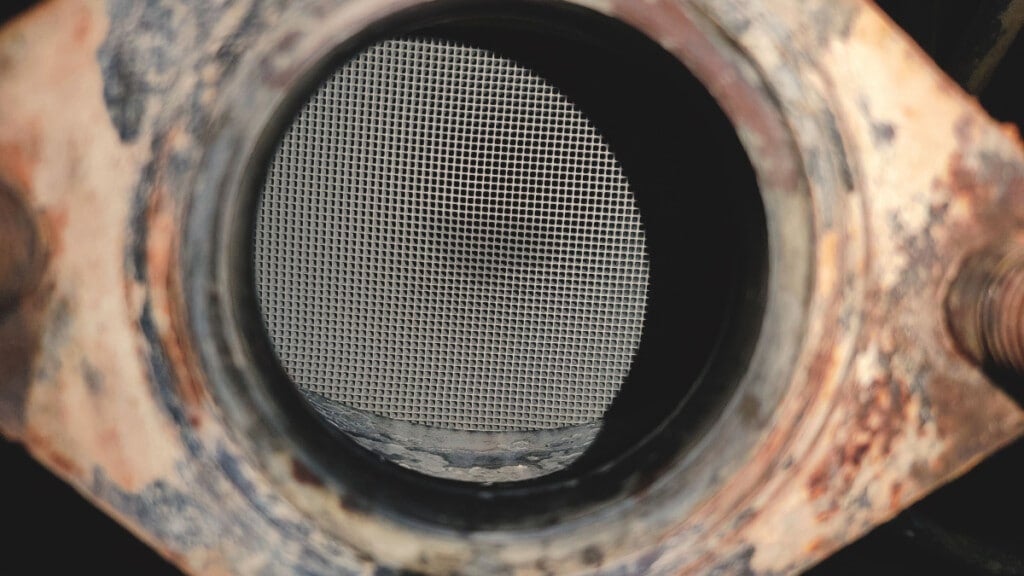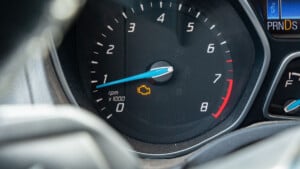When you are heading down the road and see the Jeep Check Engine Light, you are sure to be worried. This warning is meant to get your attention so you fix the problem right away. Yet, this Jeep warning light can mean so many things, making it difficult to figure out.
In this guide, we cover the meaning of the Check Engine Light on Jeep vehicles. We show you what a flashing light means and explain why you should take it seriously. Our guide also covers the top causes, the best fixes and we answer some of the most common questions.
What Does A Check Engine Light Mean On A Jeep?
The Check Engine Light is otherwise known as the Malfunction Indicator Lamp (MIL). This warning message comes on to tell you that there’s a problem with the vehicle. Numerous sensors monitor major vehicle systems and send a message to the computer if something goes wrong.
When something triggers the computer, a code is set at the same time that the Check Engine Light comes on. This DTC can be read by a compatible scanner, and you can figure out what it means by using our trouble code library.
What Does A Flashing Check Engine Light On Jeep Mean?
A flashing Check Engine Light indicates a serious fault that needs immediate attention. As soon as you see the flashing indicator light, you should stop driving your vehicle and read the DTCs with your scanner.
If you continue to drive with the flashing Check Engine Light, you could allow serious damage to occur. This is different from the solid Check Engine Light, which may indicate anything from a minor to a serious fault.
What Are Some Common Causes Of A Check Engine Light On A Jeep?
The Check Engine Light comes on whenever the systems send out an abnormal reading. For that reason, many issues cause the warning. However, the most common causes are a loose gas cap, a bad EGR valve, a bad MAF sensor, a bad oxygen sensor, a worn-out catalytic converter or a bad ignition coil.
1. Loose Gas Cap

The gas cap helps create a seal to keep fuel fumes at bay. If the gas cap is loose, cracked or damaged, the EVAP system will detect a leak. Sadly, the gas cap takes a lot of abuse or it can easily be left behind while filling up.
Even if the gas cap is working well, it can lead to trouble if you fill up with your engine running. When you remove the gas cap, a fault can be detected by the engine, signifying a leak. That’s why it’s best to fill up only after shutting down the engine.
2. Bad EGR Valve

The exhaust gas recirculation (EGR) valve is a vital part of the emissions system in your Jeep. If the EGR valve fails, you will notice several symptoms, including a Check Engine Light.
It also causes a drop in performance, higher emissions and sometimes a knocking sound. It can also cause a decrease in fuel economy.
3. Bad MAF Sensor

The mass air flow (MAF) sensor measures the air mass that flows in the engine intake. It sends signals to the computer telling it how much fuel to inject. When this sensor fails, the wrong combination of air-fuel enters the combustion chamber.
A failing MAF sensor will cause your Jeep’s Check Engine Light to come on. It will also lead to a rough performance and a significant drop in fuel economy as the engine works harder.
4. Bad Oxygen Sensor

The oxygen sensors are also needed to regulate the fuel being injected into the system. If the oxygen sensors malfunction, the computer is going to make unnecessary adjustments.
What you are left with is the Check Engine Light on your Jeep dashboard. You may also notice trouble with rough acceleration, a stalling engine or decreased fuel economy.
5. Worn Catalytic Converter

The Jeep’s catalytic converter is meant to alter exhaust gases, so they have fewer harmful substances included. Chemical reactions occur within the catalytic converter to ensure the exhaust does less damage to the environment.
Over time, the catalysts in the converter degrade and no longer perform their job. The only solution will be to replace the catalytic converter if you want to turn off the Check Engine Light.
6. Bad Ignition Coil
The Jeep’s ignition system is designed to create a spark that ignites the fuel-air mixture. The ignition coils are part of this system, working hand-in-hand with the spark plugs.
Ignition coils endure a lot of heat and abuse, so they will eventually fail and turn on the Check Engine Light. If the situation gets too bad, you may not be able to start your Jeep.
How To Fix A Check Engine Light On A Jeep?
It’s impossible to estimate what kind of repair is needed to turn off the Check Engine Light on your Jeep without knowing what’s causing the problem. However, we do have some steps that will make the process easier.
Consider these suggestions.
1. Read Trouble Codes

The best way to figure out what’s wrong is to check the codes from the computer. Connecting your compatible scanner to the OBD-II port under the steering wheel can reveal what’s happening.
If you don’t have a code scanner, there are other ways to see what was set. You can pay a local mechanic to read the codes or visit a local auto parts store for free code scanning.
2. Research Codes And Repair The Issue
The codes are going to reveal a letter and a series of numbers. It might look like P0100. This may not mean much to you, which is why you want to perform research in our online trouble code library.
The code may make it easy to figure out what’s wrong, so you can fix it. If there are multiple codes, you can piece them together to solve the puzzle.
3. Check The Gas Cap
If you’ve recently filled up the Jeep gas tank, the cap may not be secured all the way. Take a minute to double-check it and secure it if needed.
If the gas cap is cracked or broken, it’s best to replace it. A new gas cap should cost you less than $25, whether you buy it at an auto parts store or online.
4. Check Fluids

Now is also a good time to check all of the fluids in your car. Start by checking the oil fluid level. If it needs to be topped off, get a funnel and do it. If the oil looks old and contaminated, change it and the filter.
Don’t forget to check other fluids too. Your transmission fluid, coolant and brake fluid are vitally important as well.
5. Contact A Professional
You don’t have to figure out what’s going on with the Jeep if you feel inexperienced. Instead, search out a local mechanic that has more knowledge of the systems.
Find a mechanic that will give you a detailed quote so you know what to expect. For larger jobs, it’s good to call around for several quotes.
Can I drive my Jeep with the check engine light on?
Once the Check Engine Light comes on, you should have it checked immediately. If the light is flashing, you shouldn’t drive the Jeep any further. Run your code scanner to see what’s going on and have it fixed before you cause serious damage to the vital components.
What does the orange engine light mean on a Jeep?
The Check Engine Light shows that the computer recognized a fault with the vehicle. It could be something as small as the gas cap not being on right to something major, such as engine damage. For that reason, you need to run your code scanner to see what the computer says.
How do you fix a Jeep engine light?
Start by checking the codes with your compatible scanner. These codes will indicate what’s wrong with the Jeep. Once you complete the repair, you can turn off the Check Engine Light with your code scanner. If it comes back on, you should have the system checked again.
Can low oil cause the check engine light to come on?
Yes, low oil creates low pressure, which can cause the Check Engine Light to come on. When the light comes on, you should check the oil level and condition. If it needs to be filled up or changed, do it and turn off the Check Engine Light to see if it comes back on.
How serious is a solid check engine light?
The Check Engine Light can indicate a multitude of problems, from minor to severe. The only way to know for sure is to scan the system for codes to see what’s wrong. However, if the Check Engine Light starts to flash on your Jeep dashboard, you should stop driving immediately to prevent engine damage.
Your Jeep is set up with sophisticated systems to ensure everything runs smoothly. When there’s a fault that causes the computer to read something is abnormal, the Check Engine Light will come on. By taking action at the first sign of a problem, you can prevent further damage from occurring.
If you aren’t sure how to repair the Check Engine Light on your Jeep, reach out to a mechanic. It’s better to pay a little money for help than to face a serious engine repair that costs thousands of dollars because of neglect.
Tags: Jeep
Categories: Engine, Troubleshooting, Warning Lights













